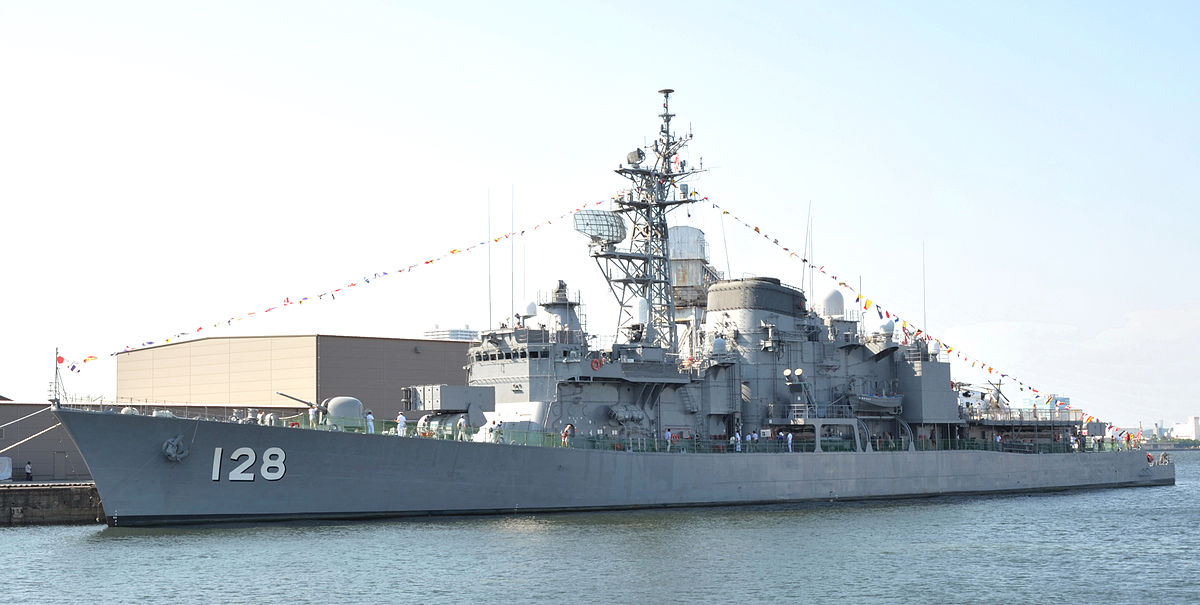The official Twitter account of the Japan Maritime Self-Defense Force (JMSDF) recently shared a stunning image of 11 of the 12 Hatsuyuki-class destroyers sailing next to each other in a formidable stance.
4th Country To Land On Moon – Triumphing Chandrayaan-3, Will UAE Beat India In Race To Lunar Surface?
The warships can be seen perfectly aligned according to their hull numbers in the photo. The Hatsuyuki-class destroyers were among the first battleships in the Japanese Navy in the early 1990s.
The JMSDF did not provide a specific date or time for the photo. However, the appearance of the Hatsuyuki class’s oldest ship, DD-122, in the image indicates that it was taken before the ship was decommissioned in 2010.
This would also imply that the photograph was shot more than a decade ago.
The Hatsuyuki-class warships were developed under a collaboration between different manufacturers, including Hitachi Zosen Corporation and Mitsubishi Heavy Industries.
前回は「やまゆき」と「はまゆき」が不在(修理中?)でしたが、「ゆき」型全11艦が並んで走ったことがあります。#海上自衛隊 #護衛艦隊 #ここでしか経験できないことがある pic.twitter.com/hNYr2Xhavi
— 海上自衛隊 護衛艦隊【公式】 (@JMSDF_EF) June 13, 2022
The Hatsuyuki-class fleet consisted of 12 destroyers, with hull numbers ranging from DD-122 to DD-133. The construction of the first ship in the class, the JS Hatsuuki (DD-122), was started in 1979.
Soon the ship was launched in 1980 and was eventually commissioned in 1982. The remaining 11 ships were also launched and commissioned before the end of the 1980s, owing to a fast ramp-up in production.
Outpacing NASA By 10 Times, China Sets Sight To Develop A Giant Telescope To Search For ‘Things That Matter’
These frigates were the first in Japanese service to be categorized as general-purpose or DD. The term DD is used for the warships that are capable of surface, subsurface, and anti-air warfare.
Before the advent of the Hatsuyuki class, JMSDF destroyer classes were classified as DDA for anti-aircraft and DDK for anti-submarine capabilities. Hatsuyuki was also the first destroyer class in the Japanese Maritime Self-Defense Force to deploy a combined gas propulsion system.

The system had two Kawasaki-Rolls-Royce Tyne RM1C gas turbines for cruising and two Kawasaki-Rolls-Royce Olympus TM3B gas turbines for reaching its top speed of 30 knots.
Detailed Specification
During the Cold War, Japan assessed the JMSDF’s destroyer fleet, concluding that more work was needed to compete with hostile nations’ technological advancements in the 1970s.
The USSR’s much stronger naval fleet was a major source of concern for Japan.
After a thorough examination, Tokyo implemented the “eight ships, eight helicopters” strategy. That means that each flotilla would comprise one helicopter destroyer, two guided-missile destroyers, and five of the newly designed general-purpose destroyers.

The hull structure was modeled on the shelter deck design used in the Isuzu class, with a lengthy forecastle that truncated the back end. The shape beneath the water line is similar to JDS Amatsukaze.
Prairie-Masker, a radiated noise reduction system, was placed after the third ship to minimize noise and was later also retrofitted to the first and second ships.
The Hatsuyuki-class warships are around 426 feet in length and have a displacement of 3,000 tonnes.
During the Falkland War, Argentina sunk a British warship with a light aluminum alloy structure with an anti-ship cruise missile attack. Using this combat lesson as a reference, the eighth warship of this class (Yamayuki) and the following units were upgraded with structural materials such as steel, and the displacement was slightly increased.

The warships were equipped with various armaments to balance the anti-submarine, anti-warship, and anti-aircraft tasks, as well as landing room for the anti-submarine helicopter on the back deck.
Also, the destroyers were capable of conducting target distinction, chase, and weapon employment electronically. This class of warship was the first in the Japanese Navy to be outfitted with the Sea Sparrow missile system.
These vessels are equipped with a 76 mm OTO Melara naval gun, two 20 mm General Dynamics Phalanx Close-In Weapon System point-defense guns, and Boeing-made Harpoon anti-ship missiles.
Aside from that, there are eight RUR-5 anti-submarine rockets and their launchers on board and two HOS-301 triple torpedo tubes for Mk-46 torpedoes. These warships, however, have been discontinued due to budget constraints and technological inadequacies.
The OYQ-5 Tactical Data Processing System (TDPS) is the heart of the combat system, consisting of one AN/UYK-20 computer and five OJ-194B workstations that can automatically receive data from other ships through Link-14 (STANAG 5514).
The JS Hatsuyuki was the first ship of its class to be decommissioned in 2010. Six more ships were decommissioned between 2010 and 2016, with the remaining five decommissioned between 2020 and 2021.
However, this was not the final destination for the Hatsuyuki class, as four of the ships were reconfigured into training boats between 1999 and 2016.
- Contact the author at ashishmichel@gmail.com
- Follow EurAsian Times on Google News




